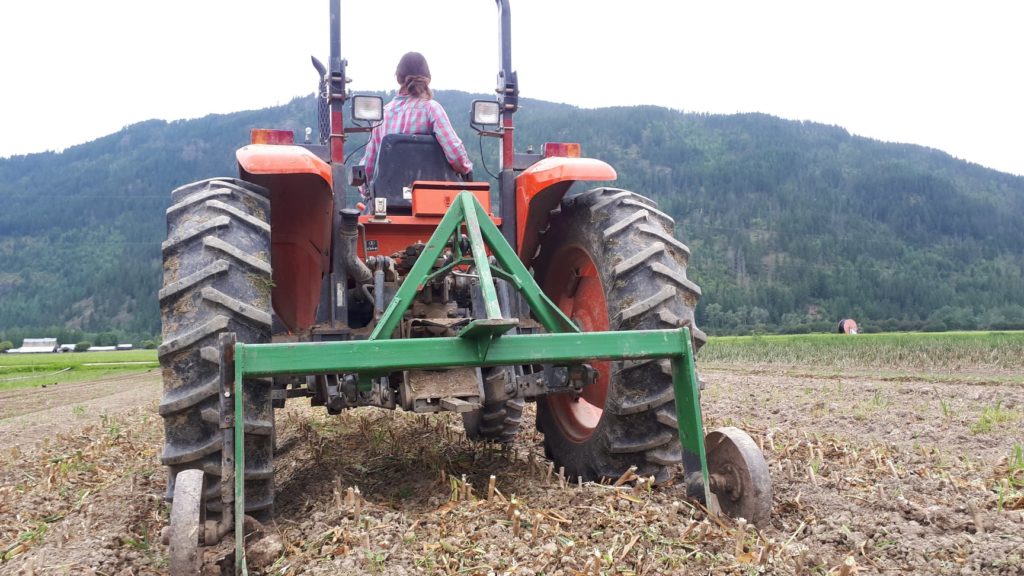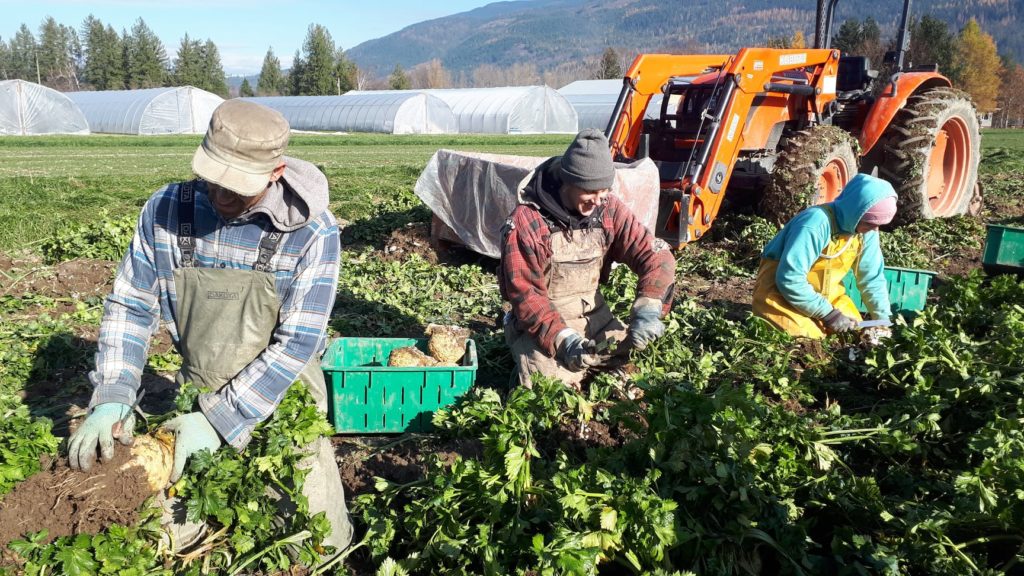
Part four in the visionary series about a best-case scenario future
In order to make the changes required to make agriculture fully sustainable, most people will have to adjust to different food needs and desires. Both beef and dairy require vast amounts of land, water, and grains to provide protein that could otherwise be provided from plant-based sources. For example, if the entire population of the world became vegan, feeding everyone would require only one quarter of the farmland used now.
When carbon taxes were applied to cattle that belch methane, the prices for meat and milk products became too expensive and most people switched to alternatives that are locally grown such as legumes and oats. The Shuswap became known as the Romano bean capital, as the growing conditions are perfect here for this “King” of the legumes that can grow upwards of 6-metres tall and harvesting methods have improved thanks to local development and manufacturing of innovative equipment. New recipes were also created locally for Romano bean meat alternatives made popular by restaurants and supermarkets.
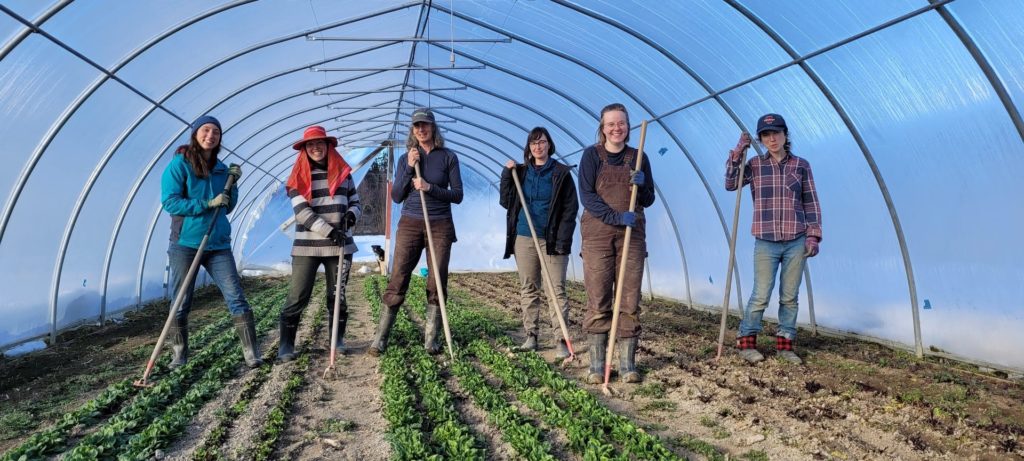
Farming methods no longer rely on vast amounts of chemical fertilizers or pesticides and instead focus on regenerative practices that create chemical-free, healthy soils. Cover crops that create green manure are now the norm, as well as crop rotation and no-till farming. Adapting to the changing climate is a key goal, given the increased number of heat waves and intense storms. Shade structures are needed for many more crops, planting times have shifted, and greenhouses use solar-powered fans to reduce temperatures.
Farms are now much smaller and farming is more intensive, as increasingly more food is produced here to feed the rapidly growing local population. In order to provide much needed housing, as well as more farm labour, a new classification was developed called craft farms where now greater numbers of people live and work. During the much shorter and less intense winters, crops are grown inside in vertical gardens under energy efficient LED lights.
Some of the best farmland in the river valleys is used for grain production with harvests milled locally for flour and cereals. Agri-forestry has also advanced so that more food is grown in partial shade in nearby forests.
While many people have switched to becoming vegetarians or vegans, those who have not are enjoying locally raised fish thanks to innovative aquaculture technology developed locally over thirty years ago that utilizes the waste for fertilizer. In addition to naturally raised chicken, turkey, and rabbits, insects are grown to provide protein additives for livestock, fish and humans.
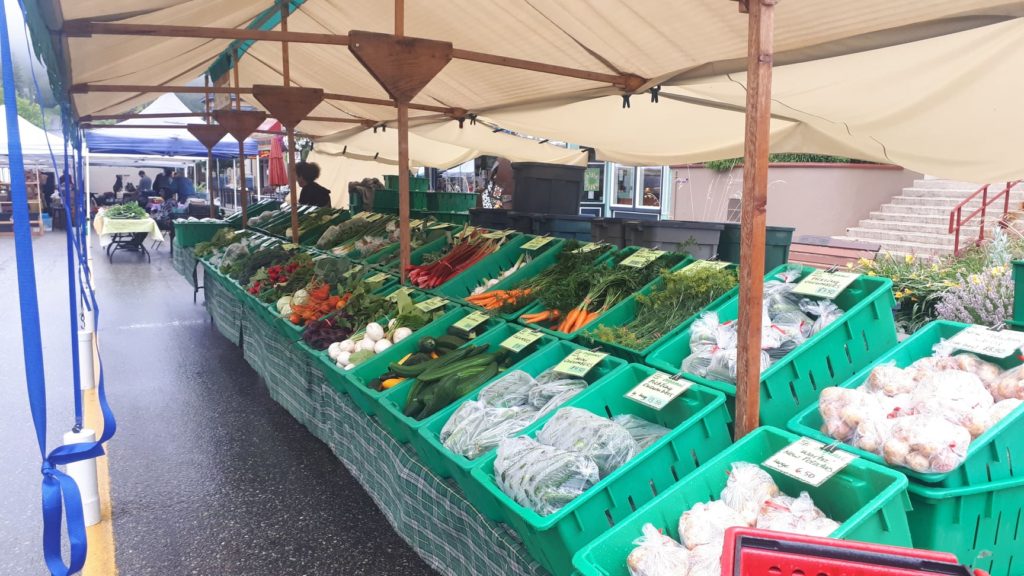
Given that much of the food needed for local consumption is now grown and processed locally, diets for most people have adapted to include more fresh produce that can be cultivated over an extended season. During the winter months, most produce other than what is grown indoors are vegetables such as cabbage, carrots, beets and kale that are stored in solar powered, underground coolers. Now very popular fermented foods, such as sauerkraut, kombucha, pickles and kimchi that have outstanding nutritional value because they contain natural probiotics are produced locally.
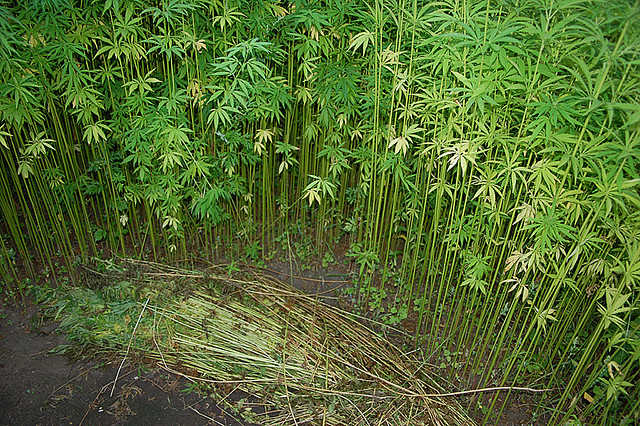
Perhaps the most remarkable change in both local and national agriculture is the extensive cultivation of hemp, that is grown for a vast array of useful products as well as for its ability to absorb massive amounts C02 at double or more the rate than that of forests. Thanks in part to carbon tax subsidies, marginal lands that were once used for pasture are now growing hemp, which also helps to restore degraded soil. Processing has improved thanks to technological advances and local hemp is used for building materials, plastic, paper products, clothing, and protein from the seeds for both animals and people.
Local agriculture is fully integrated into Shuswap communities, where there are many food hubs that provide cold storage, industrial kitchens, seeds and advice. While the goal is for most food to be grown and processed locally, by 2052 nearly half of residents’ dietary needs are provided by local producers and food waste has nearly been eliminated.
POSTSCRIPT
Food security is quickly becoming a crisis with inflation reaching new highs, the Ukraine war cutting off grain and fertilizer supplies, drought and floods limiting harvests throughout the world and the panic buying during the pandemic that at times resulted in empty supermarket shelves. Meanwhile, too many people are dependent upon highly processed foods that have limited nutritional value and that contain harmful chemicals. Fortunately, many families are switching to healthier foods and many are growing more food themselves.
By 2052, growing vegetables at home will be the norm, as most homes will have gardens instead of lawns and growing food inside under lights will be common during the winter months. Agri-communities will be the norm, with farming integrated into rural communities throughout the B.C. interior. Despite the increase in self-sufficiency, the challenges will increase as the number of intense storms are much higher as are the temperatures throughout the year. As well, with higher temperatures, there will be increased numbers of pests and diseases for growers to cope with.
Education and research will focus on agriculture, as more people focus on growing food. The Shuswap was the breadbasket for the province 100 years ago and in thirty years it will be once again and agricultural powerhouse.
